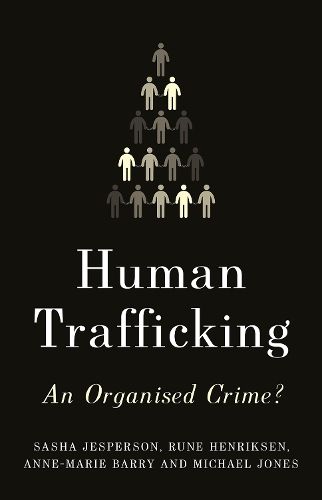Readings Newsletter
Become a Readings Member to make your shopping experience even easier.
Sign in or sign up for free!
You’re not far away from qualifying for FREE standard shipping within Australia
You’ve qualified for FREE standard shipping within Australia
The cart is loading…






‘Human trafficking’ brings to mind gangsters forcing people, often women and girls, to engage in dangerous activities against their will, under threat of violence. However, human trafficking is not limited to the sex trade, and this picture is inadequate. It occurs in many different industries—domestic service, construction, factory labour, on farms and fishing boats—and targets people from all over the globe.
Human trafficking is much more complicated and nuanced picture than its common representations. Victims move through multiple categories along their journey and at their destination, shifting from smuggled migrant to trafficking victim and back again several times. The emergence of a criminal pyramid scheme also makes many victims complicit in their own exploitation. Finally, the threat posed by the involvement of organised crime is little understood. The profit motives and violence that come with such crime make human trafficking more dangerous for its victims and difficult to detect or address.
Drawing on field research in source, transit and destination countries, the authors analyse trafficking from four countries: Albania, Eritrea, Nigeria and Vietnam. What emerges is a business model that evolves in response to changes in legislation, governance and law enforcement capacities.
$9.00 standard shipping within Australia
FREE standard shipping within Australia for orders over $100.00
Express & International shipping calculated at checkout
‘Human trafficking’ brings to mind gangsters forcing people, often women and girls, to engage in dangerous activities against their will, under threat of violence. However, human trafficking is not limited to the sex trade, and this picture is inadequate. It occurs in many different industries—domestic service, construction, factory labour, on farms and fishing boats—and targets people from all over the globe.
Human trafficking is much more complicated and nuanced picture than its common representations. Victims move through multiple categories along their journey and at their destination, shifting from smuggled migrant to trafficking victim and back again several times. The emergence of a criminal pyramid scheme also makes many victims complicit in their own exploitation. Finally, the threat posed by the involvement of organised crime is little understood. The profit motives and violence that come with such crime make human trafficking more dangerous for its victims and difficult to detect or address.
Drawing on field research in source, transit and destination countries, the authors analyse trafficking from four countries: Albania, Eritrea, Nigeria and Vietnam. What emerges is a business model that evolves in response to changes in legislation, governance and law enforcement capacities.